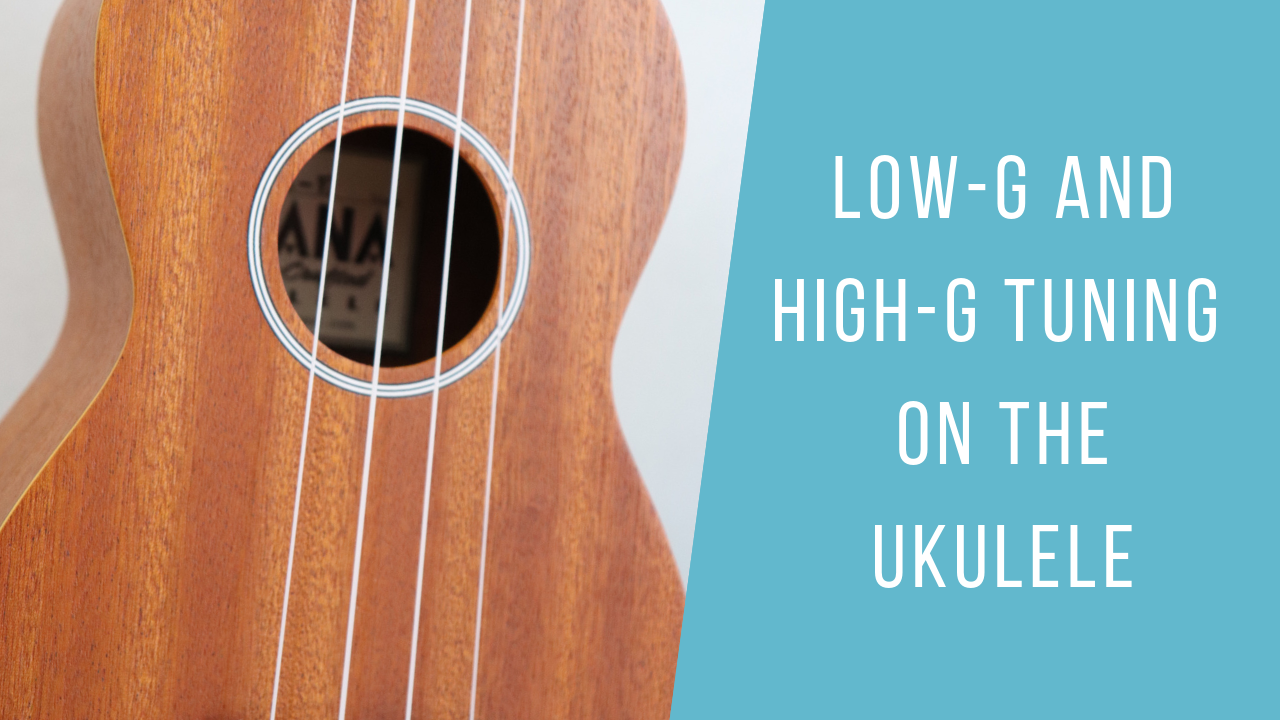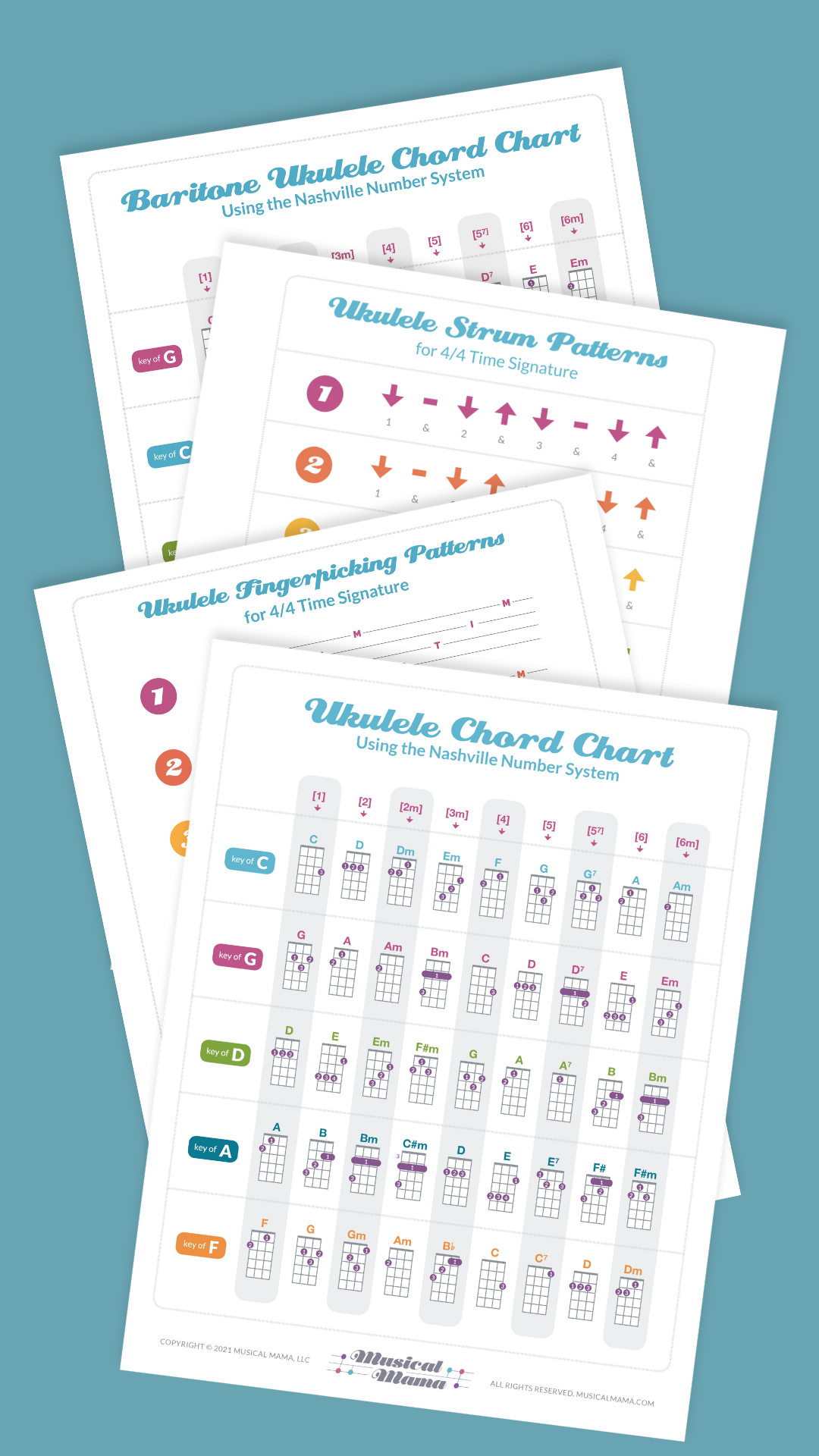Today I’m sharing an excerpt and video from my book that explains the difference between low-G and high-G tuning for the ukulele:
:: Linear Tuning :: The term for when an instrument’s strings are ordered from lowest note to highest note. Most string instruments, such as guitars and violins, follow a linear tuning.
:: Reentrant Tuning :: The term for when an instrument’s strings are not ordered from lowest note to highest note. Ukuleles and five-string banjos are two examples of instruments with reentrant tuning.
When an ukulele is in linear tuning, the lowest note is the fourth string (G). Ukes in linear tuning are usually referred to as having a low-G string. When an ukulele is in reentrant tuning, the lowest note is the third string (C) and are sometimes referred to having a high-G string. While reentrant tuning is more common, ukuleles can be in either tuning (this post doesn’t cover baritone ukuleles, which follow an entirely different tuning). Hear the difference between the two in this video:
If you’re a very new player, it’s helpful to figure out the basics on whatever you uke already have. But if you’ve been playing for a while, you may want to invest in a second ukulele so you can experiment with the two tunings. Generally speaking, I prefer to play ukes in reentrant tuning but you can hear me play both in the videos that accompany Let’s Play!
PS: If you’d like to swap out a high-G string for a low-G, take your ukulele to your local music shop for advice. I had to learn this the hard way—the low-G string I installed on my reentrant uke years ago created a lot of strain on the saddle and bridge, and it ended up causing irreversible damage to my instrument!
A note about my blog:
The content I post is free and available to all, without advertising or paywalls. If you’d like to show your support for what I do, please buy my book! :)








